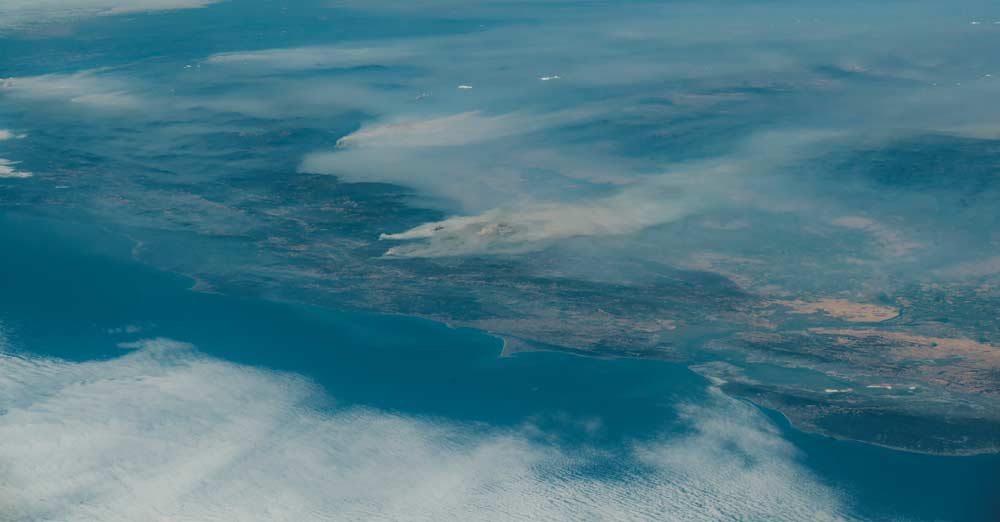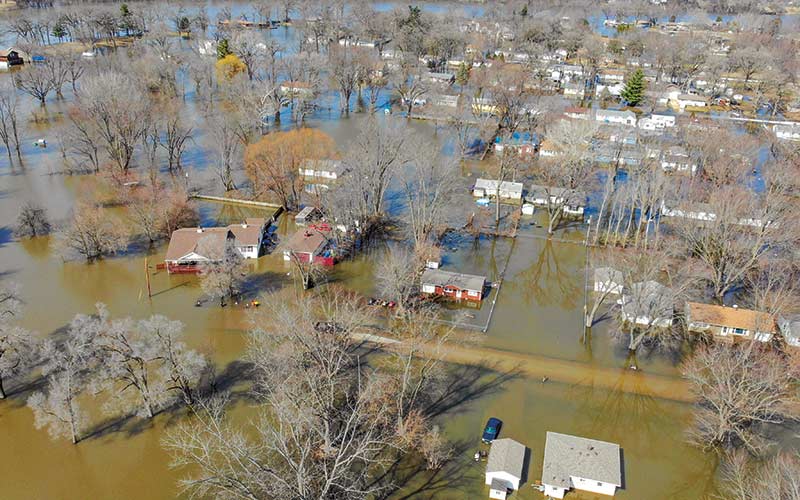
Summer 2019 ForestLife
Climate change isn’t “on the way.” It’s already here.
What is being done to address climate change at the state level?

Photo of wildfires in Oregon and California taken from the International Space Station on August 2, 2018 (photo courtesy of NASA).
From massive floods in America’s heartland, to last year’s fires across the West, climate change is already upon us. Earlier this year, atmospheric CO2 concentrations passed the 415 parts per million mark. This exceeds the projected “worst” timeline for increasing emissions and shortens the period we have to take effective action to stem the worst effects of climate change. As the October 2018 IPCC report noted, we have an all-too-brief twelve-year window. In the continuing absence of federal action, states are leading the way toward a healthy climate future. New York has agreed on a sweeping bill to reduce greenhouse gas emissions. New Jersey pledged to rejoin the Northeast’s Regional Greenhouse Gas Initiative (RGGI). Washington, Massachusetts, and Colorado also all recently took meaningful actions to reduce CO2 emissions.
California continues to refine its climate policy, which has been in place for more than a decade. In the last months of his administration, California Governor Jerry Brown issued an executive order for the state to become carbon neutral by 2045. To get there, the California Air Resources Board (ARB) is now turning its attention to the role of land in both mitigation and adaptation in climate change.
Mary Nichols, ARB Chair, pointed out at a public board meeting last November that “as we move forward, it becomes clear that we must be more active in protecting our natural and working lands as they become an increasingly important part of our climate change strategy. We have to take a much bigger look at what’s possible from our natural and working lands.” PFT is working closely with the ARB and partner organizations to help develop a plan to transform how we manage land for climate benefits. What we’re already doing for the energy and transportation sectors to create a low emissions future, we must do for natural and working lands, rewarding landowners for enhancing sequestration, protecting the land base that is so vital for climate adaptation (as well as the production of water, food, and fiber), and promoting climate-friendly land management practices through market mechanisms.
In May 2019, PFT President Laurie Wayburn gave a presentation to the ARB on ways to approach this, noting that the state has a variety of mechanisms in addition to regulations that can support landowners to make the move to climate-friendly management. These include taking lessons from the state’s pioneering recycling efforts, with procurement and purchasing standards, synergistically layering grants and contracts, and mitigating for the climate impacts of land conversion and land use changes.
In Oregon, PFT is proud to be part of a broad coalition of Oregon businesses, organizations, and activists, alongside forest landowners, the Coalition of Oregon Land Trusts, and others, that is actively supporting climate policy that includes the role of natural and working lands. The state legislature came very close to passing a climate bill in 2019; though the session ended without the passage of HB 2020, the Governor and legislative leaders are committed to enacting climate legislation with binding targets. PFT’s work has advanced the commitment to including significant investments in natural and working lands as well as the communities most affected by climate change; we will continue these efforts going forward.
Improving the carbon richness and climate resilience of our watersheds, wetlands, and forests is one of the best and most cost-effective ways to reduce atmospheric carbon. As part of our response to the changing climate, we must significantly invest in these natural lands to mitigate its worst effects, such as more extreme year-round fires, flooding, and extreme heat events.
“Because it takes such a long time to change the landscape,” Nichols notes, “action now is critical to achieving the long term gains this sector, our natural environment, can provide.”

Factors such as wetter weather and rapid spring warming, exacerbated by climate change, resulted in major flooding in the Midwest this spring. Photo by Winnebago County, Illinois Sheriff’s Department via NOAA.
More in this Issue of ForestLife
- President’s Letter
- Black Butte: Investing in forests for a healthy climate
- Climate change isn’t “on the way.” It’s already here.
- Forests’ vital role the focus at Forest Fete
- A new model for water security in the face of climate change
- Donor Profile: Ivan Samuels
- PFT announces the Springs for Life ForestWater Alliance
- Back to the land at Green Gorge
- Rewarding landowners for doing the right thing
